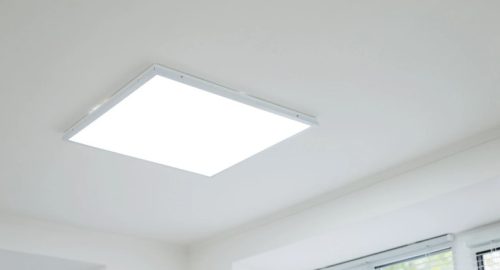Table of Contents
The lighting industry is currently transforming as sustainability takes centre stage in both homes and businesses. As energy costs continue to rise and environmental concerns keep growing, the lighting industry is having to think of innovative lighting solutions that will change the way we illuminate our businesses and workspaces.
Here, we share the five most important sustainable lighting solutions that are currently making an impact on the industry.
The Best 5 Sustainable Lighting Solutions that Will Change the Industry
1. Smart LED Technology – The Foundation of Modern Lighting

Leading the way in sustainable lighting is the continual evolution of LED technology. Modern LEDs have moved away from their basic origins to become sophisticated lighting solutions that offer impressive levels of energy efficiency.
LED systems convert nearly 95% of their energy input into light, which results in minimal waste heat. What sets current LED technology apart is how it can integrate with smart systems, enabling users to have precise control over colour temperature, brightness and timing.
LEDs also usually have a lifespan that exceeds 50,000 hours, and this longevity can reduce the number of times you have to replace them and remove the waste associated with frequent replacements.
Recent advances in LED technology have also improved their colour rendering index (CRI), which makes them ideal for use in both residential and commercial applications.
2. Maximising Natural Light by using Daylight Harvesting Systems
One of the most modern and popular approaches to sustainable light systems is the use of daylight harvesting systems.
These lighting setups usually use photo sensors to measure natural light levels, and they can then automatically adjust the artificial lighting accordingly. In commercial buildings, daylight harvesting can reduce the energy consumption of your lights by up to 60%.
The system usually combines automated blinds or shutters with dimming capabilities, ensuring optimal light levels are achieved throughout the day while also minimising energy usage.
Modern daylight harvesting systems also work with building management systems, and this helps businesses monitor how much energy they use and optimise their energy usage.
3. Using Networked Lighting Control Systems
 The evolution of networked lighting control systems has been a significant advancement for sustainable lighting.
The evolution of networked lighting control systems has been a significant advancement for sustainable lighting.
These systems go beyond simple motion detection as they can schedule an interconnected web of intelligent lighting fixtures. Each fixture becomes a node in a network, and this can gather data about occupancy patterns, temperature and energy usage.
This approach is driven by data, and it enables facilities managers to optimise their lighting schemes based on actual usage patterns rather than predetermined schedules.
Once the system has been optimised, it can automatically adjust lighting levels in different zones based on occupancy, time of day and specific task requirements. This can result in energy savings of up to 75% compared to traditional systems.
4. Solar-powered LED Lighting Solutions
Solar-powered lighting has been around for many years, but recent technological advances have made it more workable for large-scale commercial or workplace use.
Modern solar-powered LED systems combine high-efficiency photovoltaic cells with advanced battery storage solutions, and this means that there will be reliable illumination available even during extended periods of low sunlight.
These solar panel systems can also be used for exterior lighting in commercial and workplace locations in areas such as car parks and pathways.
The latest generation of solar-powered LEDs also includes features like dimming and motion sensors, which can further reduce the energy consumption of your lights while maintaining the right light levels for safety and security.
5. Biodynamic Lighting Systems to Support Human Wellbeing
 Perhaps the most forward-thinking development in sustainable light technology is the introduction of bio-dynamic lighting systems.
Perhaps the most forward-thinking development in sustainable light technology is the introduction of bio-dynamic lighting systems.
These systems can mimic natural daylight patterns by adjusting the colour temperature and intensity throughout the day. This works in harmony with our circadian rhythms while also maintaining energy efficiency.
These types of lights have been particularly useful in commercial or workplace environments where workers can spend long hours indoors, usually in artificial lighting. Biodynamic lighting has been shown to improve productivity, mood and overall wellbeing.
The systems use advanced LED technology combined with intelligent controls, and they can automatically adjust the lighting characteristics based on the time of day or seasonal changes.
New Lighting Solutions
All of the above lighting solutions represent significant advances in the world of sustainable light technology, but their impact really comes from their integration into lighting strategies.
When they are properly implemented, these systems can not only reduce energy consumption and carbon emissions but they can also create a more comfortable and productive work or home environment.
The initial investment that people or businesses make in these technologies is increasingly being offset by the substantial long-term savings in energy costs and maintenance requirements.

